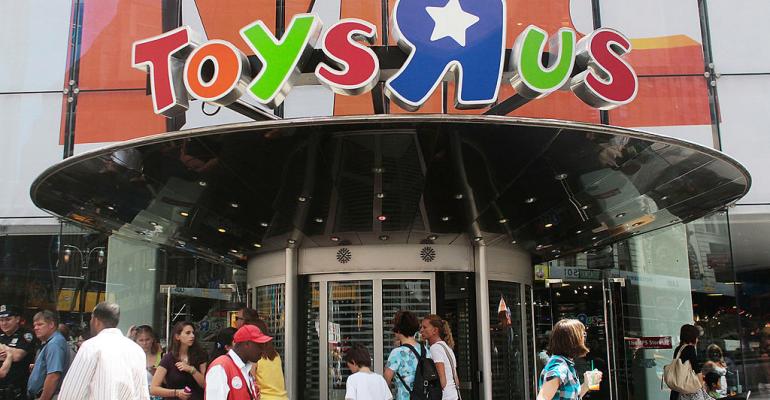The Star Wars movie franchise wasn’t the only business that had a big year in 2015. With help from classics like light sabers and the newcomer BB-8, U.S. toy retailers also enjoyed a bonanza, with $19.8 billion in sales in 2015, according to a sampling of the industry from The NPD Group’s Retail Tracking Service. That was a 7.0 percent increase in sales over the previous year. NPD Group’s findings represent about 80 percent of the U.S. toy industry. When extrapolated to the whole industry, the NPD Group estimated that the U.S. toy market was $25 billion last year.
Toys “R” Us, the big-box toy specialty retailer, walked away with its share of the spoils—a 1.2 percent increase in domestic same-store sales. On a consolidated basis, same-store sales increased 2.3 percent, according to the company.
Results for 2015 were a bright spot in an otherwise extended murky period for Toys “R” Us. But the victory turned out to be bittersweet. That same year Toys “R” Us, once the biggest toy retailer in the U.S., closed two New York City store landmarks. In the summer, it shuttered the F.A.O. Schwarz location on Fifth Avenue, followed by the 110,000-sq.-ft. Times Square Toys “R” Us location right after Christmas.
Now Toys “R” Us is on a mission to reinvent itself—with $1 billion in total liquidity. The latest plans include managing inventory more effectively and dedicating areas to hot-selling items, like Mattel’s American Girl collection, the result of Toys “R” Us recently announced partnership with the uber-popular doll brand, according to media reports.
As for those mega-sized store formats that once made it “the biggest toy store there is?” At its peak, the company could brag that it had every game and toy that a child could want, and it was all under one roof. Toys “R” Us is toning down that message. Future stores will operate in much smaller footprints—about a quarter of the current average unit size of 40,000 sq. ft., according to media reports.
“It was the original category killer,” says Jim Costello, senior vice president at research firm Real Capital Analytics (RCA).
Now the company is battling on the same fronts as most other retailers—stiff pricing competition from discount department stores like Target and War-Mart, and the bargains and ease of online shopping.
“The challenge is that the category killers are trying to reinvent themselves,” Costello says. “Now, cutting back is a good strategy. Retailers will only have the SKUs on hand that trade more frequently.” While retailers dedicate valuable shelf space to faster-selling items, other products are shifted to warehouses and sold online, he notes.
Meanwhile, after Toys “R” Us reported positive 2015 results, it returned to reporting underwhelming same-store sales gains. In the first and second quarters of 2016, the company posted gains of 0.9 percent and 0.5 percent, respectively. Before the 2015 bump, Toys “R” Us had reported net sales of $12.4 million, a 0.5 percent increase over the previous year.
Like other retailers challenged with getting consumers to come into their stores and spend money, Toys “R” Us will have to find a way to engage customers through special services and entertainment, says Howard Davidowitz, chairman of Davidowitz & Associates Inc., a national retail consulting & investment banking firm headquartered in New York City.
“An iPad is more important to any kid than any toy,” Davidowitz said. “You have a section in the store where the kids all have one and are playing with it. That means you have the mother and the kid in the store.”
Davidowitz notes that an expansion strategy that includes smaller stores in urban locations makes sense for the retailer. The only challenge after that is beating Amazon.com and discount retailers like Wal-Mart on pricing.
Toys “R” Us will also have to convince landlords and investors that its real estate strategy makes sense. Cap rates on big-box stores are reflecting the shift in investor preferences. In early 2006, about six months after Toys “R” Us had been acquired, cap rates on big-box and power center properties average about 7.1 percent. Rates ballooned to 8.7 percent during the recession, and have not fully recovered. Rates average 7.5 percent by the second quarter of 2016, according to RCA data.
“Tenants do not need the same space as they did before,” Costello says. “It creates a problem for owners of existing big-box centers, who are trying to figure out how to re-tenant or reconfigure the space.”

